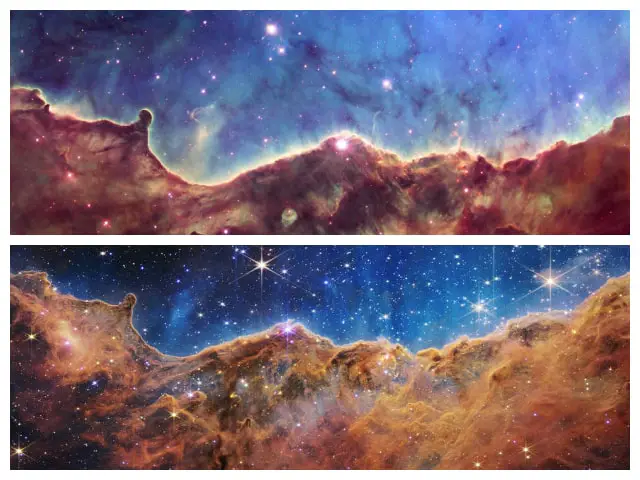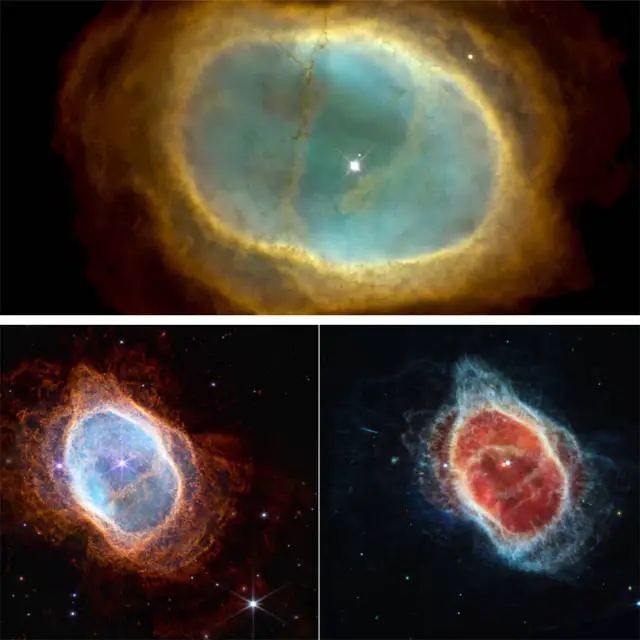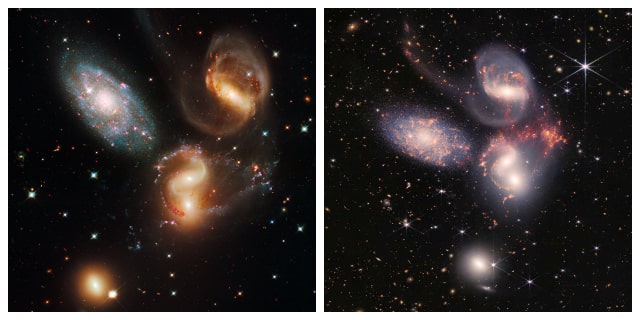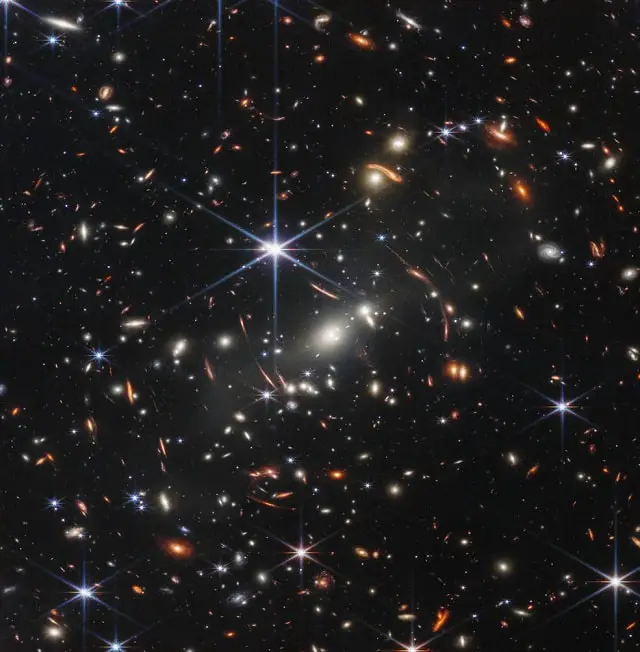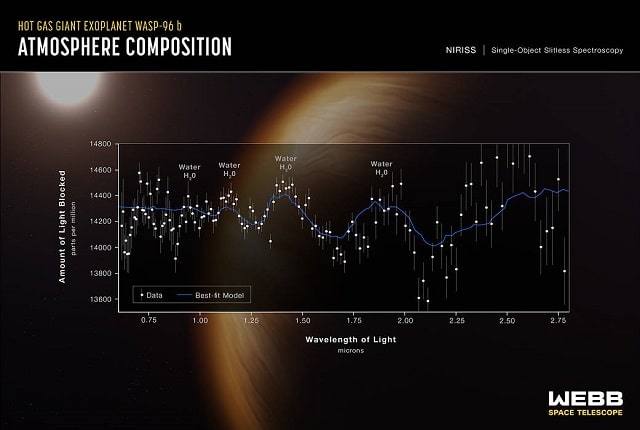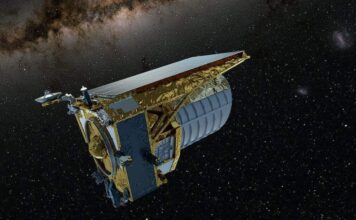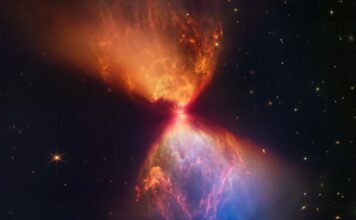We have already seen the first scientific images of NASA’s New Eye for the Sky “James Webb Telescope”, but without the predecessor photos to compare, it may be difficult to understand how good this achievement is. By comparing the old and new images of the same region with the Webb Space Telescope and Hubble, we can understand the importance of this development, which the whole world of science and astronomy is talking about.
The scientific community is discussing several new images released by the Webb Space Telescope (Webb) on July 12, and you’re thinking, “What’s so great about this?” If you think so, you may change your mind after reading this article. Most people accustomed to the stunning cosmic beauty may not be too interested in the images from the new Webb telescope at first glance.
You won’t notice the technology until they’re placed next to old images of the same area from the past progress. Even though we don’t have access the super high quality and high resolution images of the new telescope, there is still a significant difference between new and old telescopes.
Table of Contents
Mistral Nebula
The Mistral Nebula (NGC 3324), an open star cluster in Carinae, about 7,600 light-years from Earth, has for the first time revealed a previously invisible region of star birth, many baby stars, in infrared wavelengths from the Webb Space Telescope Never seen before; the cloud of hot dust and gas that appears to be a mountain extends about 7 light-years away.
In the eyes of Webb’s Mid-Infrared Imaging-Spectroradiometer (MIRI), young stars and surrounding protoplanetary disks shone brightly in pinks and reds, and structures embedded in dust were seen.
Comparison of old and new images of the Mistral Nebula. The upper picture is taken by the Hubble Telescope, and the lower picture is taken by the Webb Telescope. (Source: NASA Hubble ,NASA )
Southern Ring Nebula
The Southern Ring Nebula (No.: NGC 3132), also known as the Eight-Fission Nebula, is about 2,500 light-years away from the earth and has existed in Vela for tens of thousands of years. The dying star at the center of the nebula has been expelling gas and dust clouds in all directions over the years. As the star ejects its outer shell of matter, dust and molecules form within it, eventually expanding into what is known as the interstellar medium. Because dusts are so long-lived, they eventually travel through space and merge into new stars or planets.
Infrared images from the Webb Telescope reveal new details of the complex system of the Southern Ring Nebula. The image from the Near Infrared Camera (NIRCam) shows the star and the light layer prominently, while the image from the Mid-Infrared Imaging-Spectroradiometer (MIRI) shows for the first time another star surrounded by dust.
Comparison of the old and new images of the Southern Ring Nebula. The upper image was taken by the Hubble Space Telescope, and the lower two images were captured by two lenses of the Webb Space Telescope. (Source: NASA , NASA )
Stephen’s Quintet
Stephan’s Quintet is a group of 5 galaxies in sight, 4 of which are physically related and are likely to merge into a supergalaxy in the future; the spiral galaxy NGC 7320 is actually a “false member” , which is very far away from other galaxies, but just happens to be in the same area of the sky.
The Webb telescope has imaged five galaxies in greater detail than ever before, with bright spots visible at the center of each, representing supermassive black holes engulfing dust and gas. The new images also reveal the flow of gas as galaxies begin to merge, and are collected from a mosaic of nearly 1,000 files into more than 150 million pixels, covering an area about one-fifth the diameter of the moon.
Most notably, the massive shock wave captured by the Webb telescope as galaxy NGC 7318B passed through the cluster.
Stephen’s Quintet, taken by the Hubble Telescope on the left, and the Webb Telescope on the right. (Source: ESA , NASA )
Galaxy Cluster SMACS 0723
The galaxy cluster SMACS 0723 is Webb’s first deep-field image, a deeper look into distant space-time than Hubble.
Old Hubble images can see many stars and galaxies, but the light is faint. By contrast, the stars and galaxies in Webb’s images are radiant, revealing many hidden structures, especially more distant galaxies that appear redder, many even beyond Hubble’s view.
Precise observation of exoplanet atmospheres
Exoplanets are still a big difficulty in cosmic exploration, because they are very small and weak. Although the radial velocity method and the transit method can be used to deduce their mass, orbit and other characteristics, we want to further understand the planet’s atmosphere and even the surface. Imaging is even more difficult.
The Webb telescope combines a super-giant mirror with advanced precision instruments to obtain the most detailed measurements of exoplanet atmospheres to date, capturing the unique characteristics of water molecules in the atmosphere of the gas giant WASP-96 b 1,150 light-years away, and Evidence of clouds and haze brings a huge technological leap forward in the search for habitable-zone planets.
The Webb telescope has measured the unique water molecule signature of the exoplanet WASP-96 b. (Source: NASA )

